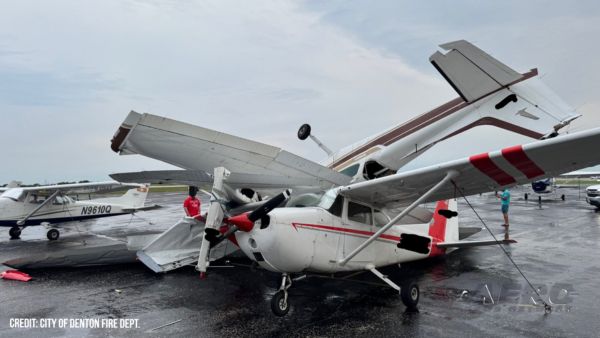Mon, Jan 15, 2024
Crew Contacted ATC And Reported That They Were Having A Problem Transferring Fuel From The Ferry Tanks
Location: Half Moon Bay, CA Accident Number: WPR23LA192
Date & Time: May 20, 2023, 14:00 Local Registration: N153QS
Aircraft: Viking Air Limited DHC-6-400 Injuries: 2 Fatal
Flight Conducted Under: Part 91: General aviation - Ferry

On May 20, 2023, at about 1400 Pacific daylight time, a de Havilland DHC-6-400, N153QS, was substantially damaged when it impacted the Pacific Ocean near Half Moon Bay, California. The pilot and 1 passenger were fatally injured. The airplane was operated as a Title 14 Code of Federal Regulations (CFR) Part 91 ferry flight. The U.S. Coast Guard responded to the accident site.
The operator reported that the airplane had a ferry tank system installed and 540 gallons of fuel was added for the transpacific flight. The airplane’s amphibious floats were removed for the flight. The flight departed the Charles M Schulz-Sonoma County Airport (STS), Santa Rosa, California, and was destined for Daniel K Inouye International Airport (HNL), Honolulu, Hawaii. After departure, satellite flight tracking data showed the airplane on a southwest heading over the ocean at an altitude of about 15,500 ft mean sea level (msl). About 4 hours into the flight, the crew contacted ATC and reported that they were having a problem transferring fuel from the ferry tanks and that they intended to return. About 356 miles from the California coast, the flight track reversed course to the northeast, towards STS. At 1145 time, the flight crew reported that they lost fuel pressure and an engine. The last few minutes of the data shows an altitude drop from about 3,600 to about 240 ft msl. The last track
data point was about 33 miles off the California coast.
The U.S. Coast guard responded to the scene minutes after accident. The examination of the wreckage in the water revealed that the fuselage was inverted, and the wings and engines separated from the airplane. The horizontal stabilizer remained partially attached to the empennage and the forward fuselage had impact damage. Occupant and wreckage recovery was not performed.
More News
About 2132 And At 11,800 Ft MSL, The Airplane Began A Rapid Right Spiraling Descent On August 18, 2025, about 2133 central daylight time, a Lancair NLA-275-FR-C airplane, N345LA, w>[...]
Aero Linx: The Collings Foundation The Collings Foundation is a non-profit, Educational Foundation (501(c)3), founded in 1979. The purpose of the Foundation is to preserve and exhi>[...]
"This first FAA certification enables us to address the pilot shortage crisis with modern training solutions. Flight schools need alternatives to aging fleets with 40-year-old desi>[...]
North Atlantic High Level Airspace (NAT HLA) That volume of airspace (as defined in ICAO Document 7030) between FL 285 and FL 420 within the Oceanic Control Areas of Bodo Oceanic, >[...]
“HITRON embodies the Coast Guard’s spirit of innovation and adaptability. From its humble beginnings as a prototype program, it has evolved into a vital force in our co>[...]
 NTSB Prelim: Lancair NLA-275-FR-C
NTSB Prelim: Lancair NLA-275-FR-C ANN's Daily Aero-Linx (09.12.25)
ANN's Daily Aero-Linx (09.12.25) Aero-News: Quote of the Day (09.12.25)
Aero-News: Quote of the Day (09.12.25) ANN's Daily Aero-Term (09.12.25): North Atlantic High Level Airspace (NAT HLA)
ANN's Daily Aero-Term (09.12.25): North Atlantic High Level Airspace (NAT HLA) Aero-News: Quote of the Day (09.13.25)
Aero-News: Quote of the Day (09.13.25)



